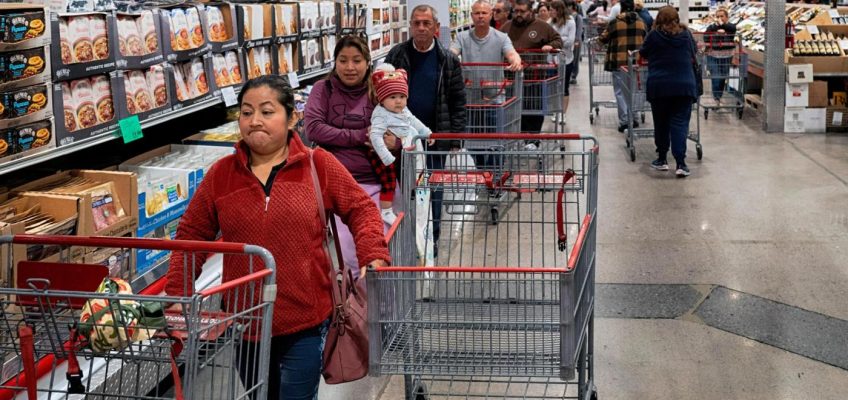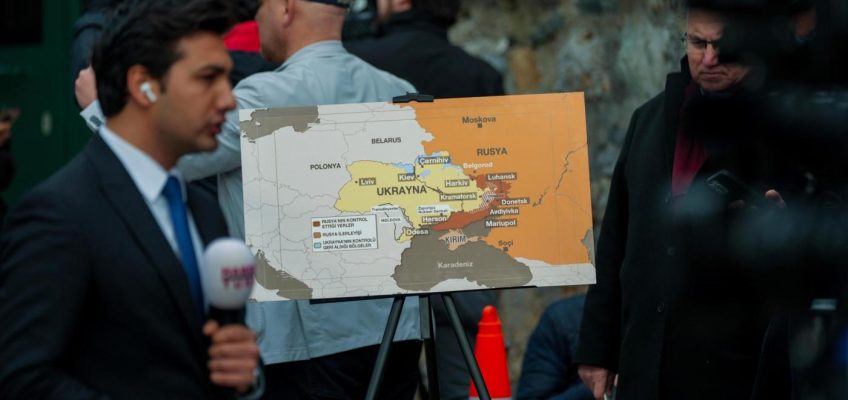By NICOLE WINFIELD, Associated Press
ROME (AP) — Pope Francis reached the two-week mark in his recovery from pneumonia Friday as doctors suggested he had overcome the most critical phase of the infection but held out on declaring him out of danger entirely.
The Vatican, though, made alternative plans for Ash Wednesday next week, making clear Francis still had a long road ahead. Cardinal Angelo De Donatis, a Vatican official and former vicar of Rome, will preside over the March 5 ceremony and procession that inaugurates the church’s solemn Lenten season leading up to Easter in April.
People attend as The Pope’s vicar for the dioceses of Rome Cardinal Baldassarre Reina holds a rosary prayer for the health of Pope Francis in St Peter’s Square at The Vatican, Thursday, Feb. 27, 2025. (AP Photo/Kirsty Wigglesworth)
The Vatican’s early Friday update suggested a level of normalcy and routine as the 88-year-old pope continues recovering at Rome’s Gemelli Hospital. “As in past days, the night was tranquil and the pope now is resting,” it said.
Francis had breakfast, read the day’s newspapers and was receiving respiratory physiotherapy, the Vatican said.
In their Thursday evening bulletin, doctors said Francis’ clinical condition had confirmed that he was improving. He was alternating the high-flow supplemental oxygen he had been receiving by a nasal tube with a mask in a sign of improved respiratory function. Additionally, he left his hospital room to go to his nearby private chapel to pray, while continuing with respiratory physiotherapy and work, the Vatican said.
For the second day in a row, doctors avoided saying Francis was in critical condition, suggesting he had overcome the most acute phase of the infection. But given the complexity of his lung infection, they said “further days of clinical stability are needed” before they revise their prognosis officially and say he is out of danger.
Francis has been at Gemelli Hospital since Feb. 14 after his bronchitis worsened.
He has shown steady, albeit slight, improvements since a respiratory crisis and kidney trouble over the weekend sparked fears for his life. The improvements beat back speculation of an imminent death or resignation and signaled that he was still very much in charge.
Prayers continued to pour in
In Mexico City, a few dozen people gathered Thursday night at the cathedral to pray for Francis’ recovery.
Parishioners light candles while praying for the health of Pope Francis at the Metropolitan Cathedral in Mexico City, Thursday, Feb. 27, 2025. (AP Photo/Marco Ugarte)
“He is like part of the family,” said Araceli Gutiérrez, who treasures the time she saw the pope during his trip to the country of nearly 100 million Catholics in 2016. “That’s why we feel so concerned for him.”
María Teresa Sánchez, who was visiting from Colombia with her sister, said that she has always felt close to Francis — the first Latin American pope.
“That’s like having a relative within the higher-ups, with God,” she said. “He has done so much for religion; he’s such a humble person.”
Upcoming calendar in question
Despite his improvements, Francis’ near-term upcoming calendar of events was being changed: The Vatican canceled a Holy Year audience scheduled for Saturday, and it remained to be seen if Francis would skip his Sunday noon blessing for the third week in a row. With Ash Wednesday now delegated to a cardinal, the next major events come during Holy Week and Easter, which this year falls on April 20.
In past years, when Francis has battled bronchitis and influenza in winter, he curbed his participation in Ash Wednesday and Holy Week events, which call for the pope to be outdoors in the cold leading services, participating in processions and presiding over prayers in the solemn period in which the faithful commemorate Christ’s crucifixion and resurrection.
Beyond that, Francis has a few major events coming up that he presumably would hope to keep if well enough. On April 27, he is due to canonize Carlo Acutis, considered to be the first millennial and digital-era saint. The Vatican considers the Italian teenager, who died of leukemia in 2006 at the age of 15, an inspiration for young Catholics.
Another important appointment is the May 24 commemoration of the 1,700th anniversary of the Council of Nicea, Christianity’s first ecumenical council. The spiritual leader of the world’s Orthodox Christians, Patriarch Bartholomew I, has invited Francis to join him in Iznik, Turkey, to commemorate the anniversary, which he has called an important sign of reconciliation between the Catholic and Orthodox churches. Before he got sick, Francis said he hoped to go, though the Vatican hasn’t confirmed the trip.
Maria Hernandez contributed from Mexico City.
Associated Press religion coverage receives support through the AP’s collaboration with The Conversation US, with funding from Lilly Endowment Inc. The AP is solely responsible for this content.




